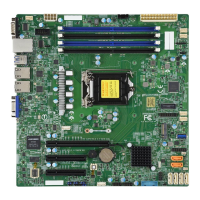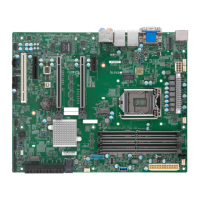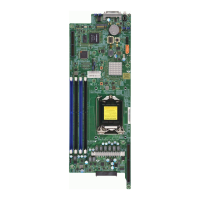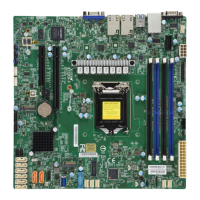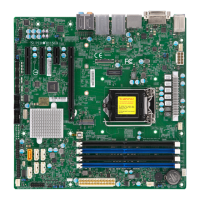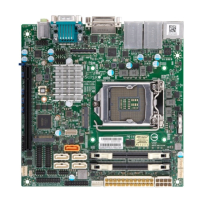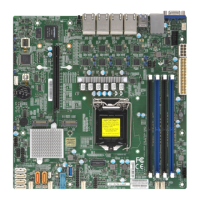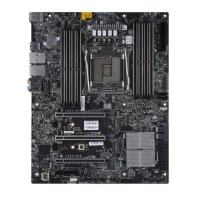Do you have a question about the Supermicro X11SCL-IF and is the answer not in the manual?
Lists key features including CPU, memory, chipset, expansion slots, network controllers, and I/O devices.
Step-by-step instructions for installing the motherboard into the chassis, including I/O shield and standoffs.
Provides detailed steps for installing the LGA 1151 processor and its heatsink with fan.
Covers memory support specifications and guidelines for installing DDR4 ECC UDIMM modules.
Step-by-step instructions for inserting and removing DIMM modules from the memory slots.
Explains various connectors like ATX power, 4-pin power, fan headers, TPM, M.2, and SATA ports.
Outlines initial steps for diagnosing system issues before power-on and for no power scenarios.
Provides troubleshooting steps for common problems like no video, system boot failure, and memory errors.
Addresses causes and solutions for system instability and loss of BIOS setup configuration.
Lists common BIOS beep codes and their corresponding error messages for diagnostics.
| PS/2 ports quantity | 0 |
|---|---|
| USB 2.0 ports quantity | USB 2.0 ports have a data transmission speed of 480 Mbps, and are backwards compatible with USB 1.1 ports. You can connect all kinds of peripheral devices to them. |
| USB 3.2 Gen 1 (3.1 Gen 1) Type-A ports quantity | 2 |
| ECC | Yes |
| Memory voltage | 1.2 V |
| Supported memory types | DDR4-SDRAM |
| Maximum internal memory | 64 GB |
| Supported memory clock speeds | 2133, 2400, 2666, 2667 MHz |
| UEFI version | 2.7 |
| Thermal Design Power (TDP) | 95 W |
| Supported RDIMM module capacity | 4GB, 8GB, 16GB, 32GB |
| BIOS type | UEFI |
| ACPI version | 6.0 |
| BIOS memory size | 256 Mbit |
| RAID levels | 0, 1, 5, 10 |
| Supported storage drive interfaces | SATA III |
| Wi-Fi | No |
| LAN controller | Intel I210 |
| Ethernet interface type | Gigabit Ethernet |
| On-board graphics card model | Aspeed AST2500 |
| Storage temperature (T-T) | -40 - 70 °C |
| Operating temperature (T-T) | 0 - 50 °C |
| Storage relative humidity (H-H) | 5 - 95 % |
| Operating relative humidity (H-H) | 8 - 90 % |
| Processor socket | LGA 1151 (Socket H4) |
| Processor manufacturer | Intel |
| Compatible processor series | Intel Celeron, Intel Core i3, Intel Pentium, Intel Xeon |
| Processor number of cores supported | 6 |
| Component for | Server |
| Motherboard chipset | Intel C242 |
| PC health monitoring | FAN, LED, Temperature, Voltage |
| Motherboard form factor | mini ITX |
| Number of SATA III connectors | 4 |
| Harmonized System (HS) code | 84733020 |
| Width | 170.2 mm |
|---|
